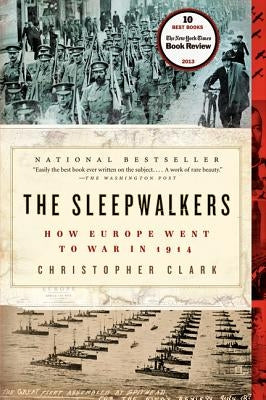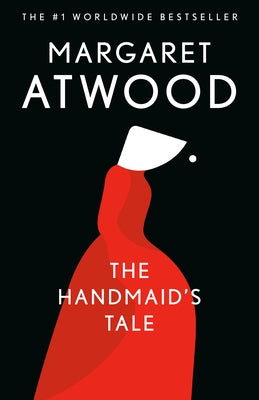World War I and Uncovering Curiosities

World War I and Uncovering Curiosities
The First World War, one of the biggest wars in the world, determined the fate of many countries. It is known as one of the first international wars of the 20th century. This war arose from the states' search for raw materials and colonies. There has been a struggle for economic and political dominance, especially among industrialized countries. With the war, long-existing states were destroyed and new states were established in Europe and the Middle East.We have brought together world war novels for you at the White Rain Book House so that you can master every moment of this war, which requires detailed analysis and historical knowledge.

American Midnight: The Great War, A Violent Peace, And Democracy's Forgotten Crisis
From the legendary historian Adam Hochschild, it is among the best World War I books ever written on race, immigration, and labor rights, in which World War I and the foundations of American democracy were threatened by violence fueled by war, epidemics, and conflict.Gangs destroyed Black churches. Thousands of people have been sentenced to prison by courts because of their political beliefs—in one prominent instance, only privately. Tens of thousands of people were detained by self-proclaimed vigilantes. The mailing of about 75 publications and magazines was prohibited, and they had to shut down. When the government intervened, it frequently did so to fan the flames.This was America during and immediately following World War One: a brief but horrifying period marked by lynchings, censorship, and the cruel, often fatal abuse of conscientious objectors in military prisons; a period marked by toxic currents of racism, nativism, and red-hot prejudice. Through the intervening decades, disrespect for the law has directly harmed our own lives.The four years following the United States' involvement in World War I are chronicled in American Midnight by award-winning historian Adam Hochschild in a terrifying yet inspirational way. He brings to light long-forgotten oppression and celebrates an unforgettable group of Americans who tried to rebuild their broken nation while also illustrating their struggles. still serves as a guide.

The Storm of Steel, a first-person account of World War I trench warfare from the diaries of German infantryman Ernst Jünger, one of Europe's most talented writers, was originally published in 1920. The novel was universally recognized as a masterpiece when it was originally translated into English in 1929 by Basil Creighton, the renowned translator of numerous other classic works of German literature. After numerous significant engagements in which Jünger developed from an enthusiastic young soldier to a battle-tested general, The Steel Storm was affected by World War I. It still serves as the canonical account of World War II.Although the author's later edits deleted many of the vivid depictions of war and his insights on the nature of leadership, patriotism, and heroism from the initial editions, later translations fell short of the original's compelling and readable style. In order to allow a new generation of readers to experience the classic that introduced one of Europe's finest voices to millions of people, the original translation has finally sold out and is now accessible for the first time in decades.

Tannenberg 1914: Destruction Of The Russian Second Army
Learn about the Eastern Front combat, which resulted in one of Germany's biggest victories in World War I by destroying the entire Russian army with its own weapons. This book is the first to visually explain the epic Eastern Front fighting and Tannenberg is a tremendous battle in and of itself that demands a complete assessment. carries it out. No other book on the topic takes you through the action as thoroughly as this one does, using thorough maps to show unit locations and movements and to help explain crucial command decisions. At the same time, historical photos and vivid battle scenes expose the military, bringing the soldiers back to the center of the action. contrasting parties' material cultures.Michael McNally guides you through world war novels through the early frontier battles and the battles of Gumbinnen and Stallupönen, before moving on to exploring Tannenberg's massive, often confusing running battle in easy-to-follow and concise detail.
Broken Wings: WWI Fighter Ace's Story Of Escape And Survival
Brave World War I fighter pilot downed and taken prisoner. This captivating novel describes the life and hardships of a captive pilot in war-torn Europe in 1917. It is a compelling and original portrayal of his adventures as a fleeing prisoner of war. Captain John Ryan, He was eager to experience combat during World War One. the British flag outside of Canada joined. He earned his wings and became an Ace in ferocious air combat over Germany as one of the few American pilots in the Royal Flying Corps before the US entered the war. After being shot down twice behind enemy lines, Lieutenant Ryan describes the struggles, tragedies, and hardships of 72 days of hiding behind enemy lines.You are unable to take your eyes off the page because these occurrences are so unbelievable. Broken Wings: WWI Fighter Ace's Story of Escape and Survival is a book you won't want to miss if you enjoy hearing real accounts of extraordinary stories set during the First World War.

World War I: The Definitive Visual History
The First World War, an epic struggle that lasted from 1914 to 1918, has forever been etched in human memory. From the assassination of Archduke Franz Ferdinand to the signing of the Treaty of Versailles, World War One: The Definitive Visual History covers it all. Experience some of the most significant battles, including the Somme and Verdun, through compelling first-person narratives from combatants and civilians who lived through the First World War. Learn more about significant individuals like David Lloyd George and Joseph Joffre while getting a close-up look at the magnificent weapons and equipment utilized throughout the battle through photo galleries.Each episode establishes the context for the subsequent events by spotlighting the when, where, and why of events as they affected history. A timeline and map are presented at the start. The commemorations that took place 100 years after the war and the monuments erected all across the world in memory of those who lost their lives are covered in the book's concluding chapter.This is an engaging and visually stunning guide for anyone who wants to learn more about the First World War, and one of the best World War II books to teach about a war that changed the course of history.

The Facemaker: A Visionary Surgeon's Battle To Mend The Disfigured Soldiers Of World War I
One thing was obvious as soon as the first machine gun sound was heard on the Western Front: Humanity's military technology far surpassed its medical skills. The bodies were gassed, gash-hacked, carved, and pummeled. Millions of people lost their lives in the First World War, while millions more suffered injuries and deformities. Nevertheless, there were individuals who made an effort to lessen the suffering in the midst of this savagery. Facemaker chronicles the extraordinary life of one such individual: Harold Gillies, a visionary plastic surgeon committed to repairing the burned and fractured faces of injured troops under his care.Gillies, a New Zealander with Cambridge training, developed an interest in plastic surgery after coming across human waste near the front. He founded one of the first hospitals in the world that was solely focused on facial repair when he eventually returned to England. There, Gillies gathered a special group of disciples whose goal was to recreate what had been damaged or shattered. Gillies not only restored the faces of the wounded, but also their souls, at a period when losing a leg made a military hero but losing a face rendered him a monster to a community that was primarily intolerant of ugliness. Facemaker first revealed Gillies' brilliant surgical breakthroughs. places it next to the dramatic accounts of soldiers' lives that are both destroyed and healed.Consequently, a vivid portrayal of how medicine can be an art and what bravery and inventiveness can do in the face of unrelenting misery is produced.

Barbara W. Tuchman: The Guns Of August
Renowned historian Barbara W. Tuchman recreates the opening month of World War I in this important work: the thirty days in the summer of 1914 that shaped the trajectory of the war, the century, and ultimately the history of the modern world. Tuchman follows each action that results in the eventual clash, starting with the funeral of Edward VII. And since everyone involved had planned their fights for a decade, this was unavoidable. Tuchman's masterpiece is a work of art for the ages. It is astoundingly thorough and masterfully rendered with his famed ability to recall the characters of major players in the battle. The Guns of August, winner of the Pulitzer Prize, The Proud Tower, The Zimmermann Telegram, Barbara W. Tuchman's First It comprises well-known World War II histories.Voted one of the 100 best nonfiction books of all time by the Modern Library, it is among the best World War II books.

The Sleepwalkers: How Europe Went To War In 1914
The compelling account of World War I's dramatic outbreak by historian Christopher Clark is The Sleepwalkers: How Europe Entered the War in 1914. Instead of the fighting and horrors of war, Clark instead relies on the intricate dynamics that throw a group of well-intentioned leaders into a deadly confrontation. It provides a fresh perspective on World War I by emphasizing relationships. Vienna, Berlin, St. Louis, Clark He recounts the roads to conflict and looks at decades of history in a minute-by-minute action-packed narrative between important centers of decision-making in St. Petersburg, Paris, London, and Belgrade. Christopher Clark's The Sleepwalkers is a gripping and authoritative account of Europe's descent into a devastating war. It is meticulously researched and masterfully written.

It is regarded as the classic account of the conflict and was written by the author of three prior best-selling Companions on Waterloo, Trafalgar, and Gettysburg. The Western Front Guide is more than just a combat chronology. Instead, it is a startlingly in-depth and forensic anatomy of how and why armies engaged in battle, their tools of the trade, and their strategies over the course of four brutal years on a front line that stretched from the Belgian coast to the Swiss border. 450 miles. Along with the British Army, Britain's allies Germany, France, Belgium, Australia, New Zealand, Canada, South Africa, and India also had complete coverage.The 350,000-word book covers everything from medical teams and chaplains to the railroads at the front. This book, like the preceding Companions, is distinguished by its amazing visual resources, which include original and complex maps and diagrams, more than 200 noteworthy historical photographs, contemporary color photographs, and images of modern battlefield visitors. Anyone interested in the genuine narrative and all facets of the Great War on the Western Front cannot afford to remain without paying respect to the majestic and moving cemeteries, monuments, and bone tombs that mark the martyrs.

Collision Of Empires: The War On The Eastern Front In 1914
While the fighting on the Western Front of World War I was ferocious, major battles between the three burgeoning empires of Russia, Austria-Hungary, and Germany remain a little-known aspect of the conflict. War. Collision of Empires is a timely revelation of the torturous struggle on this neglected front, a conflict that would ultimately transform the face of Europe for all time as we commemorate the 100th anniversary of the commencement of the war in 2014. This book is a dramatic portrayal of the stormy events of the first year of the unsuccessful war, followed by the battles of the Tannenberg and Masurian Lakes in East Prussia, followed by the Russo-Austrian clashes in Galicia. It is based on first-hand reports and extensive archival research.The Germans are advancing towards Warsaw, you should definitely read this novel, which stands out among world war novels.
Even though a hundred years have passed since World War I, it still arouses curiosity with its mysterious stories and epic history. If you are curious about this gripping and realistic side of history, join us at White Rain Book House.








